There’s much more to bathing than just getting clean, says Jennifer Eichstaedt, marketing administrator for Drive Medical.
“You can reduce stress just by soaking in a warm bath for a few minutes,” she explained. “Bathing not only cleans you, but it helps fight infection and colds by stimulating the vascular and lymph systems and encouraging the bacteria-destroying properties of the immune system.”
But bathing can be a challenge for the homecare population, and the bathroom is often considered the most dangerous room in the house, largely because of the danger of falls.
Bath safety products can provide more confidence for people to safely bathe on their own and enjoy its health benefits, Eichstaedt said.
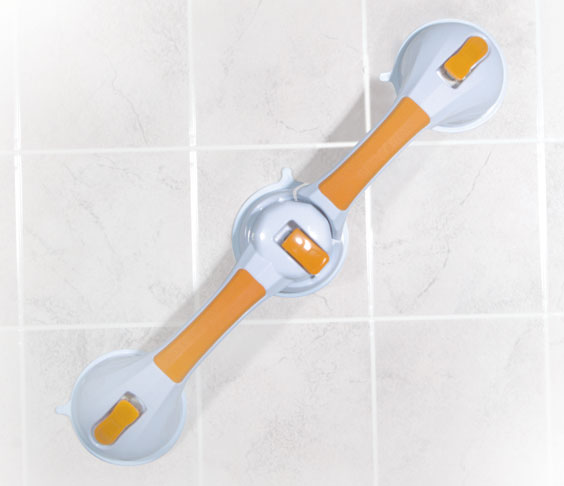 Manufacturers of bath products are striving to combine bath safety with aesthetics. For HME providers, attractive bath safety products that are well-built as well as functional offer an opportunity to increase cash sales.
Manufacturers of bath products are striving to combine bath safety with aesthetics. For HME providers, attractive bath safety products that are well-built as well as functional offer an opportunity to increase cash sales.
Laurie Birko, Moen Home Care brand manager, said the most popular products are those that incorporate safety and avoid looking institutional.
“Consumers today are informed, and demand products that not only offer safety but are stylish, innovative and easy to use and install,” she said.
For example, Moen’s SecureMount Grab Bars and Anchors are designed to blend into the bath’s décor. Products are available in lengths from 12 to 48 inches and in finishes including chrome, brushed nickel, old world bronze, white and a texture that improves grip.
Moen Home Care also offers a paper holder that includes a decorative grab bar, imbuing an essential accessory with a safety feature. Other Moen Home Care products that combine function, safety and style include grab bars, hand grips, raised toilet seats, shower seating, transfer benches, handheld showerheads and tub grips.
Bathlifts and Beyond
Drive Medical’s Eichstaedt said a bathlift can help people overcome bathing difficulties and restore dignity and independence.
Drive Medical recently acquired exclusive North American distribution rights to Aquajoy Premier Plus and Saver Bathlifts. The Aquajoy Premier Plus Reclining Bathlift makes getting into and out of the bathtub safe and simple. The back reclines up to 40 degrees for personalized positioning, and a safety feature ensures that the lift has enough charge to lower and raise a user into and out of the bathtub. Easy-release suction cups on the base provide stability and adapt to most bathtubs. The weight capacity is 375 pounds.
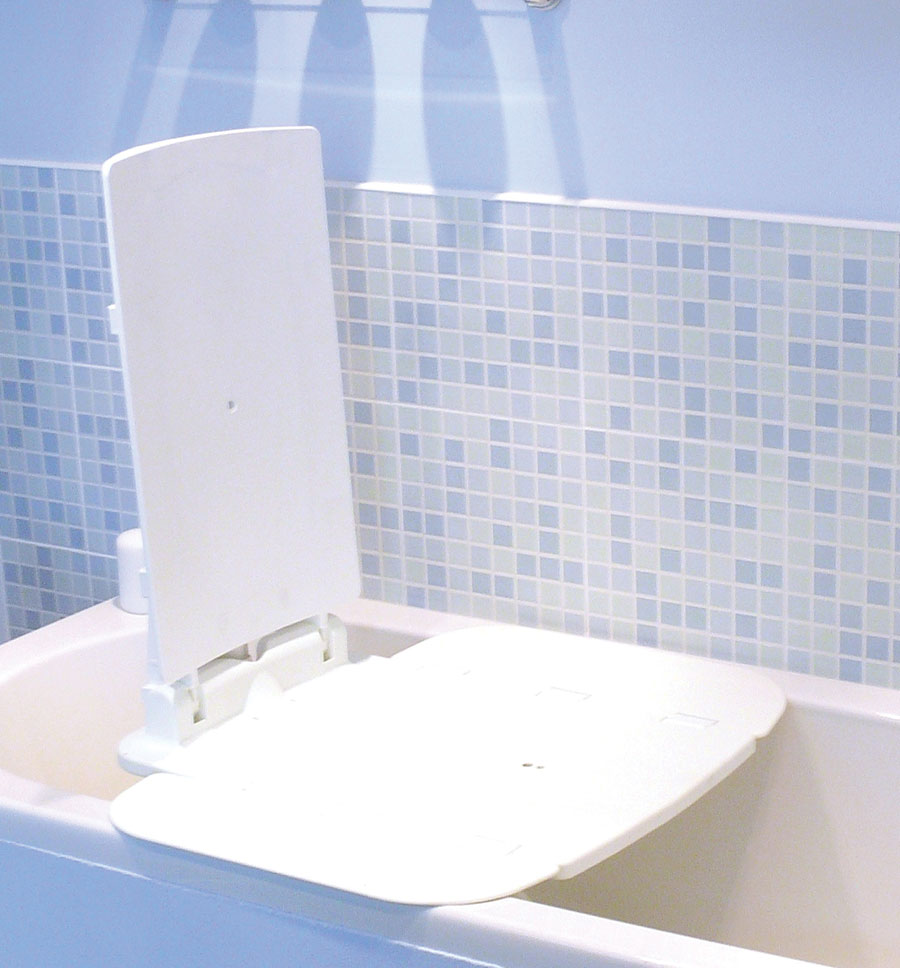 Drive Medical also offers many other bathroom safety and convenience products that provide tool-free assembly, high weight capacities and colors to fit a variety of décors.
Drive Medical also offers many other bathroom safety and convenience products that provide tool-free assembly, high weight capacities and colors to fit a variety of décors.
Cali Thomson, Invacare’s business manager of bath safety, said HME providers may not realize the profit in bath safety items. Thomson noted that many providers lack understanding about how to sell the products because they have been so focused on reimbursable products. They need to understand basic retail strategies like cross-selling and upselling.
For example, cross-selling involves considering the bath-related needs of a current wheelchair customer by suggesting a grab bar to accompany a shower chair sale. Providers should walk customers through various products they might need and provide concise and direct information, advised Thomson: “Give them informed options. Be the place they want to come to.”
Rather than focusing on product features, try to assess the customer’s needs by asking questions: Do you have trouble bending your knees? Do you need help going to the bathroom?
When arranging delivery of a bed or mobility device, providers should ask questions about how customers plan to handle bath safety, Thomson said. They should offer to provide a bath safety assessment. Invacare has created a bath safety assessment program, including a checklist.
Invacare’s bath safety products include transfer benches, bath benches and grab bars. The Rio Bath Lift provides an alternative to expensive bath renovations and a sense of empowerment to seniors who prefer a bath to a shower.
Display Bath Safety Products
Jay Everett, sales manager for Clarke Health Care Products, urged HME providers to feature a bath safety section in their showrooms as a way to support an entire bath safety conversion.
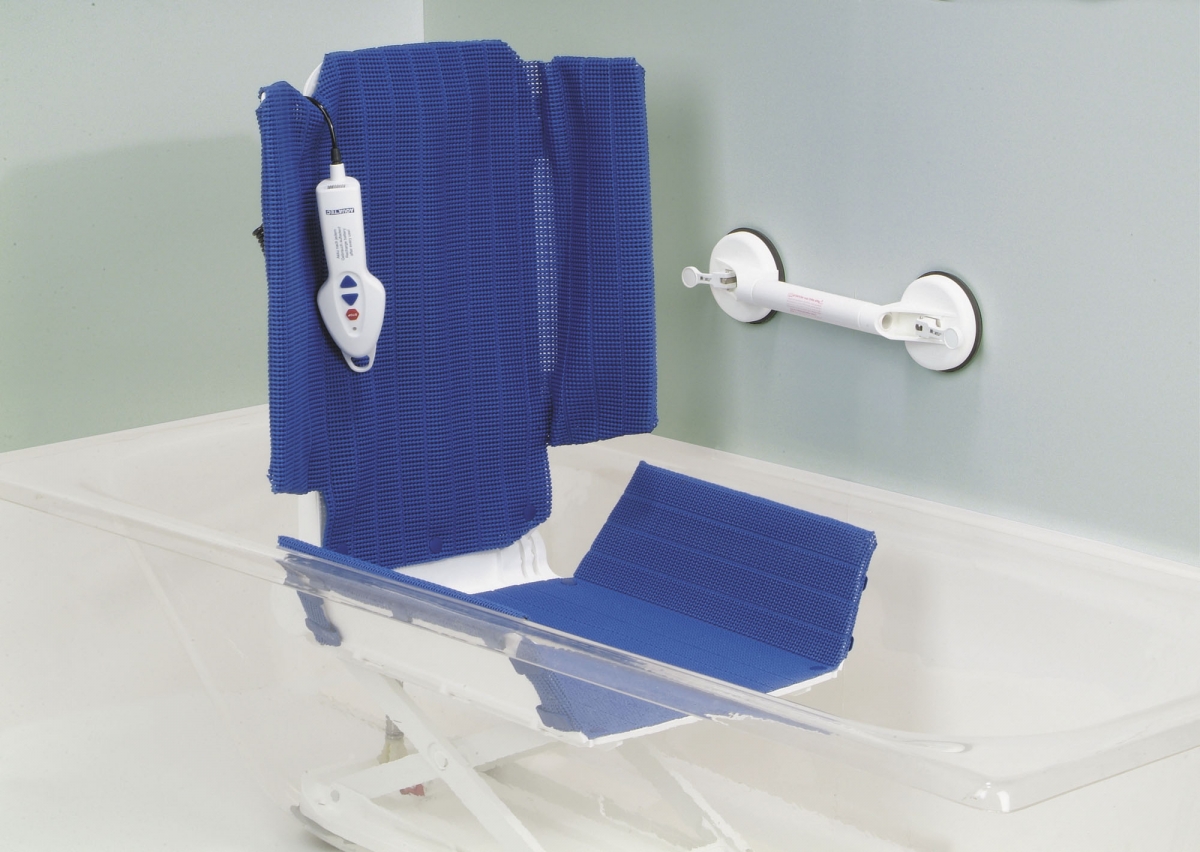 “Bathing is something most people do every day, and the bathroom should be considered a high priority to convert to a safer environment,” he said.
“Bathing is something most people do every day, and the bathroom should be considered a high priority to convert to a safer environment,” he said.
Clarke Health Care Products supports providers with point-of-purchase materials. The company also provides other information and can even assist end-users with products in a dry-run.
Everett noted that bath safety products help HME providers grow cash sales and allow them to rotate items quickly on shelves without having to deal with reimbursement paperwork. He recommended stocking better quality items.
Awareness is also an issue. Many individuals who could benefit from bath safety products don’t even know they are available, Everett said.
Aging Americans and people with disabilities need knowledgeable guidance for items to make bathrooms safer and more convenient, Everett noted.
Clarke Health Care Products markets shower/commode chairs, powered bathlifts, portable grab bars and bath seats for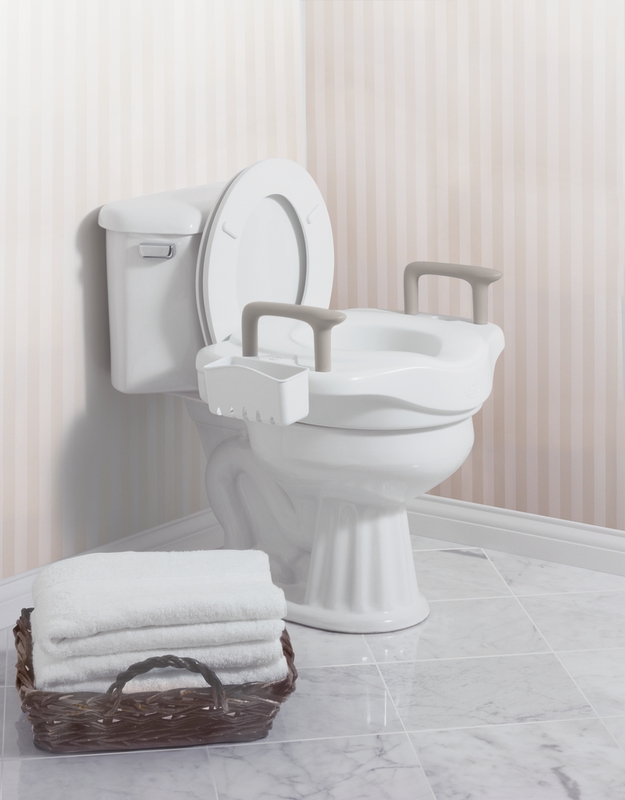 adult and pediatric users. Clarke Health Care’s Aquatec powered bathlift has accessories to customize the seat and positioning for any user’s ability. The portable bathlift can also be used in a home rental setting or for travel.
adult and pediatric users. Clarke Health Care’s Aquatec powered bathlift has accessories to customize the seat and positioning for any user’s ability. The portable bathlift can also be used in a home rental setting or for travel.
Thomson of Invacare agreed there should be a dedicated, organized bath safety space in the showroom. Providers should also apply other retail strategies. Displaying products out of the box allows customers to touch and feel them, and products should be displayed to illustrate how they are used. Consumer-focused literature can help patients and caregivers analyze choices. Invacare allows providers to use the company’s product images to produce promotional literature with the provider’s name.
“You want the products to sell themselves,” Thomson said.
Thomson urged providers to consider how they feel when they visit their favorite retail location and approximate that experience in their stores, which should be organized, clean and well-lit.
“What feeling do you want to create for customers as they walk in the door?” asked Thomson. “Some providers shove products in the corner, still in the box and not organized. No one is going to look at that.”
“Safety first” should be the mantra of all sales efforts, Thomson said. Functionality and safety are more important than aesthetics. But aesthetics matter, too, as demonstrated by attractive packages and décor-friendly designs. Products should look like something customers already have in their homes, not sterile and institutional.
“More and more you’re seeing trends toward brighter, softer colors,” Thomson said.
The baby boomer population wants more product options, and Thomson said the Internet plays a big role in education, directing customers to stores.
Eichstaedt of Drive Medical also emphasized the need to educate customers about safety risks in and around the bathroom.
“Due to aging and mobility challenges, older individuals are susceptible to these risks,” she said. “Bathroom safety products allow people to stay in their home longer because they can keep up with their hygiene safely.”
Eichstaedt also sees the value of targeting multiple products for a patient’s range of challenges. Individuals shopping for one product might be a good candidate to buy additional safety products. For example, a shower spray can be purchased with a bath bench, a bath step with a tub rail or a tub rail with a bath mat.
Combine Expertise and Product Quality
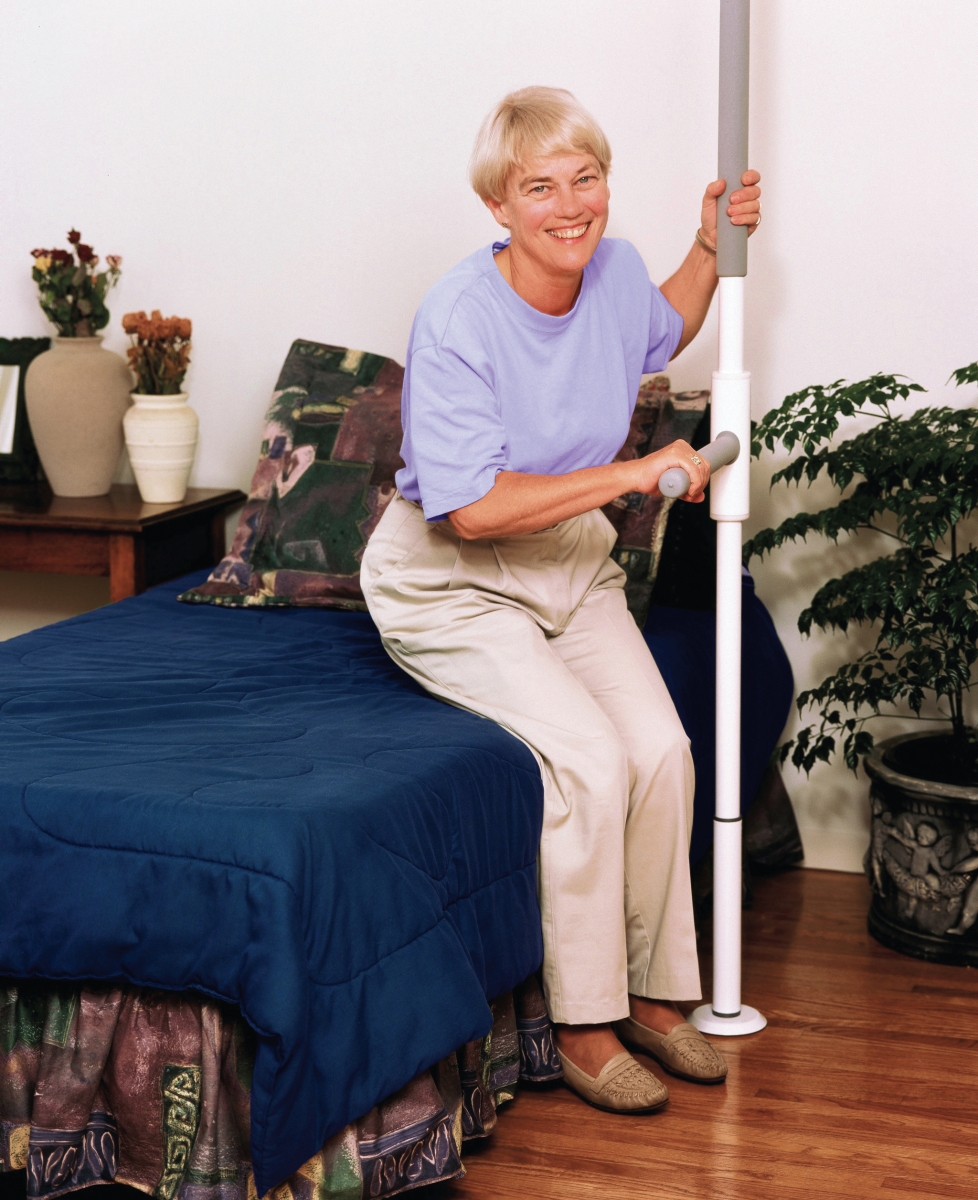 HealthCraft Products produces bedroom and bathroom safety items. The flagship SuperPole is a floor-to-ceiling pole that can be placed anywhere, unlike a traditional grab bar that requires a nearby wall.
HealthCraft Products produces bedroom and bathroom safety items. The flagship SuperPole is a floor-to-ceiling pole that can be placed anywhere, unlike a traditional grab bar that requires a nearby wall.
Ian Crawford, who handles marketing and media relations for HealthCraft Products, emphasized that HME products do not have to be low-priced and/or compete directly with commodity items sold by big-box retailers. “HME providers provide expertise, product quality and a service no other retailer can provide,” he said.
Crawford also urged HME providers to realize the value of packaging products together to increase sales.
“Don’t forget that everyone who comes in for a rollator, wheelchair or scooter has a mobility issue and needs a safe way to transfer to and from their mobility product, and grab bars, floor-to-ceiling poles and/or bed rails are easy inclusions,” he said.
HealthCraft offers a variety of standalone display units to fit any showroom, and also provides a variety of end-user catalogs, dealer sales guides and a demo program that involves donating products to rehab facilities on behalf of providers as an aid to generate referrals.
Crawford said opportunities in the bath safety sector are unlimited. “Since the aging population wants to stay in their homes as long as possible, bathroom remodels are inevitable,” he said.
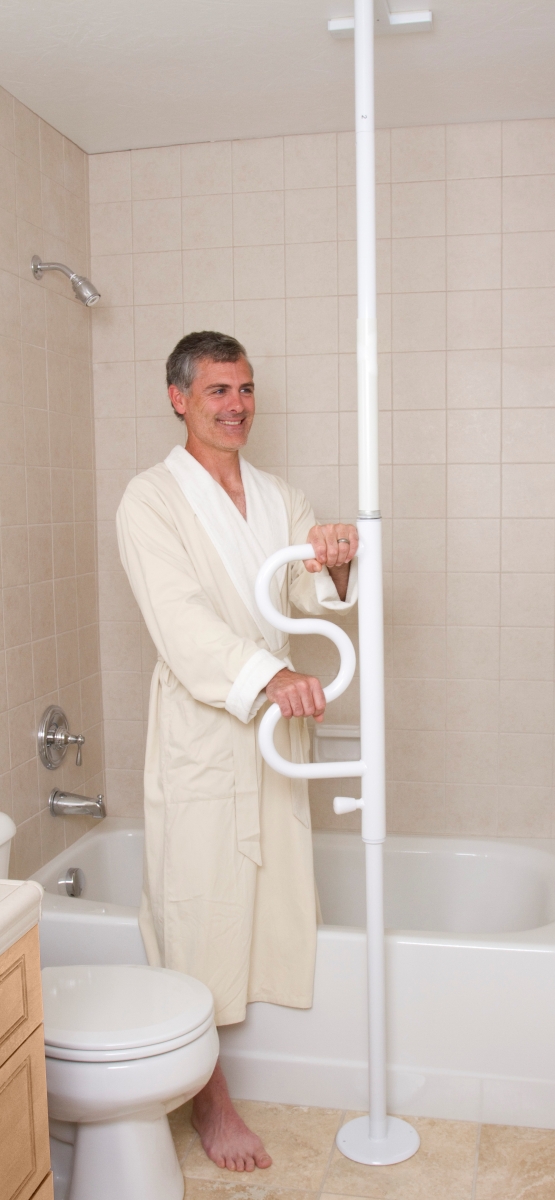 Another provider of bath safety products is Stander, whose product line consists of more than 30 mobility solutions with more coming soon, said Troy Holland, Stander’s national sales manager.
Another provider of bath safety products is Stander, whose product line consists of more than 30 mobility solutions with more coming soon, said Troy Holland, Stander’s national sales manager.
Stander’s Security Pole with Curve Grab Bar provides safe, secure support for sitting, standing or for patient transfers anywhere in the house, including the bathroom. Installation is simple and secure: The floor-to-ceiling Security Pole is tension-mounted and packaged with its own wrench. The Security Pole can be permanently installed with included wood screws. A slim design enables easy fit into tight spaces, such as between the bathtub and the toilet. The pivoting Curve Grab Bar locks into eight different positions.
Establish a Unique Identity
Revolution Mobility has broadened its business from power mobility to a variety of categories, including bathroom safety. The company is in the process of redesigning and transitioning its products to emphasize retail sales rather than an institutional focus. Changes include making products easier to assemble from interconnected parts that snap together without tools. Products are now also easier to store and more portable. Packaging has become more retail-friendly, and QR codes on packages can be scanned to access a 30-second educational video from a smart phone. Retail packaging also emphasizes the need for multiple elements to solve bath safety challenges: A package might show a combination of items on the side of the box, like a handheld shower, bath mat and suction grab bar.
“If someone picks up the box, they are being educated,” said Tom Reynolds, Revolution Mobility’s senior vice president of business development.
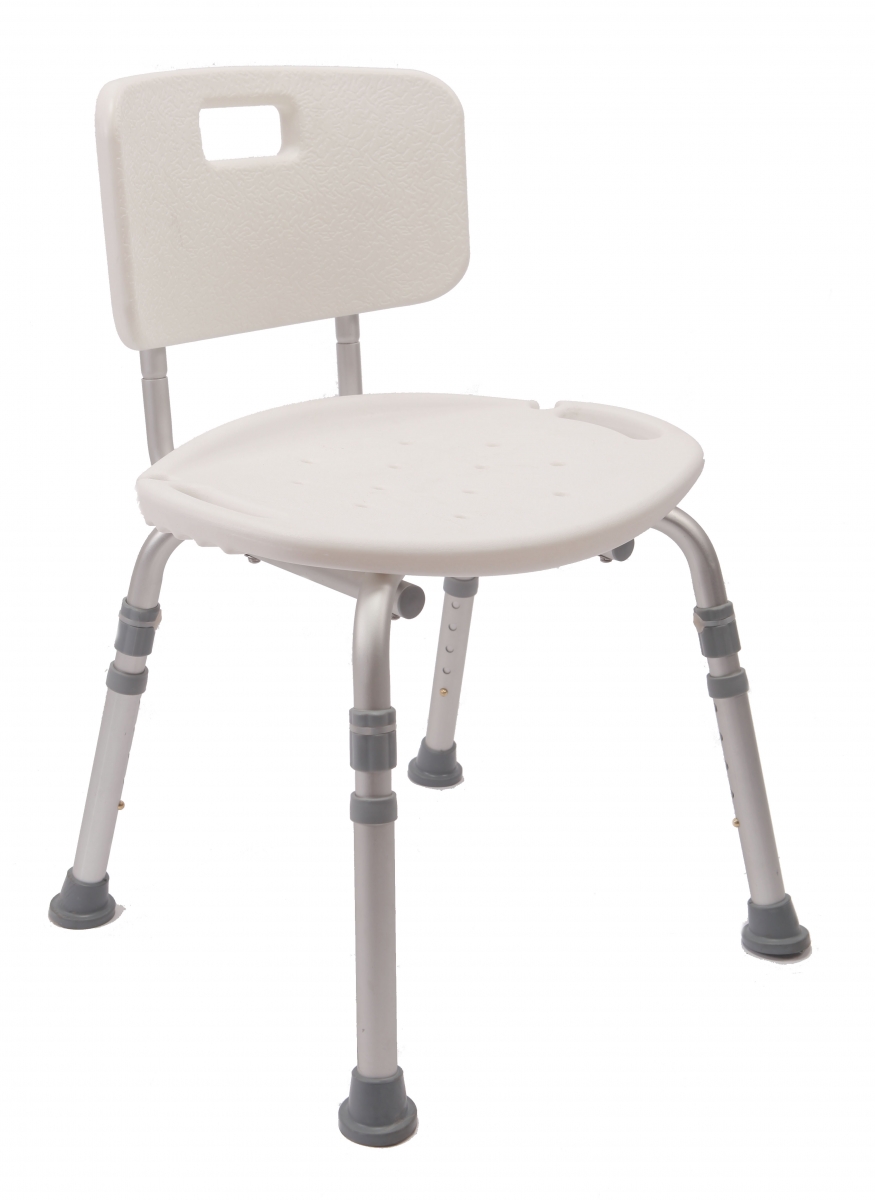 An example of the new product approach is the Viverity B101-2R bath bench, which has a back and can be assembled in less than 15 seconds. Easy assembly benefits travelers who want to take the bench with them.
An example of the new product approach is the Viverity B101-2R bath bench, which has a back and can be assembled in less than 15 seconds. Easy assembly benefits travelers who want to take the bench with them.
Reynolds sees opportunity for HME providers who redress their stores and bring in new items to provide add-on cash sales.
“They can now give the appearance of a walk-in showroom targeting caregivers, physical therapists and local clinicians,” he said. The approach will help build referrals, and more compact retail packaging allows up to four products to be stored in space previously needed for one product.
Reynolds says HME stores need to establish an identity that separates them from the big-box stores and chain and local pharmacies, including different branding, choosing higher-end products with more features and benefits and providing service.
“When someone walks into the HME store, and there is a wall set or a category of products tied together, it will increase sales,” Reynolds said.
HME providers can offer a “bathroom safety kit”—including a bath bench, suction grab bar and hand-held shower, for example—to local hotels to ensure the safety of senior or disabled guests. Reynolds also recommended targeting local physical therapists and clinicians to let them know about bath safety products. Demonstrating products to physical and occupational therapists at their facility can build referrals.
It’s unfortunate that bath safety products are not covered by insurance and Medicare, Reynolds said. More emphasis on bath safety products across the board would save money and avoid accidents.
“These items aren’t covered, but with prices coming down, they are affordable,” he said. “Even in today’s economy, baby boomers have more disposable income and cash. These items are useful and purposeful, even if they aren’t being acknowledged or covered by Medicare or other insurance. Don’t neglect to mention these items. Bring them to the attention of the consumer or caregiver—it’s an easy sale because it makes sense.”
Specialized Sector: Bariatrics
Bariatrics is a specialty area for bath safety, and TFI Healthcare provides shower benches with up to 700-pound weight capacity.
Joe Battiston, president of TFI Healthcare, says misconceptions about the size of the bariatric market have led some large-volume suppliers to enter the market, saturating it with low-quality products.
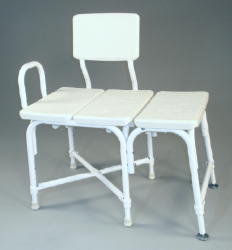 Although the general population is trending toward being more overweight and even obese, the market serving really large bariatric patients is still small and specialized. The flood of new products—some imported and of poor quality—has left some customers confused and dissatisfied.
Although the general population is trending toward being more overweight and even obese, the market serving really large bariatric patients is still small and specialized. The flood of new products—some imported and of poor quality—has left some customers confused and dissatisfied.
In contrast, Battiston said TFI Healthcare’s new products, such as the 4379 heavy-duty transfer bench offering a 700-pound weight capacity, are being built even stronger and better.
“People are willing to pay more for better quality and performance,” he said. “Other products claim to have a higher capacity, but if you look at the unit you start to question it.”
TFI Healthcare offers a range of bath safety products, including bath benches, shower benches and transfer benches as well as bedside commodes. TFI provides elongated toilet seats on its bedside commodes, in contrast to some competitors that offer imported seats with openings that are smaller than standard porcelain commodes.
Battiston says that providers should offer more than one product line and should display a more expensive product next to a less expensive one to demonstrate to consumers the advantages of stronger construction and higher quality. Battiston says he knows of providers who will only sell a higher quality product to a customer located outside a limited delivery range to avoid the costs of multiple call-backs when the less expensive product fails. Also, “it’s not good for the reputation of the store to be carrying lower-quality products.”
Battiston said providers should stock several basic units, including a bariatric commode if appropriate to their market area. TFI Healthcare has 13 models of commodes—and two colors in the pediatric model—and can drop-ship to a customer if the provider doesn’t have a particular model in stock.
Bath Safety ChecklistHere are some questions to ask when assessing a client’s bathroom safety needs, excerpted from Invacare’s Enhanced Patient Care Program Checklist:
|
HomeCare, March 2012
